T-51 Days (October 14) - OA-4 Cygnus Service Module Arrives At KSC Marking A Major Milestone In Its Prelaunch




T-51 days (October 14) - OA-4 Cygnus service module arrives at KSC Marking a major milestone in its prelaunch processing flow, the service module for the Cygnus spacecraft’s return to flight arrived at Kennedy Space Center earlier this week. The pressurized cargo module for the OA-4 mission arrived at Kennedy in early August, and technicians have been checking out the module ahead of cargo stowing. OA-4 marks a significant shift in the Cygnus program, not just because it is the spacecraft’s return to flight, but also the first flight of the Enhanced Cygnus. The cargo module is 3.9 feet longer than the initial Standard Cygnus, allowing the spacecraft to transport over 3,300 extra pounds of cargo. The Service Module also boasts new Orbital ATK-made Ultraflex solar arrays, which are lighter than the original rectangular arrays made by DutchSpace. The image below shows a comparison between the two versions of the spacecraft, with the Enhanced Cygnus on the right.

Final assembly and cargo stowage is expected to occur in late October and early November. Encapsulation inside an Atlas V 400-series payload fairing will occur in mid November, followed by rollout to SLC-41 and vehicle integration in late November. Currently, the launch of OA-4 is scheduled for December 3, though that date may move up or be pushed back depending on various factors. It will be the first flight of the spacecraft since an October 29, 2014 launch failure that destroyed the spacecraft and subsequently grounded the program. The enhanced Antares 200 rocket is undergoing final integration and assembly at Wallops Island, Virginia, and Orbital ATK teams are preparing for a period of pad testing. The next flight of Cygnus on an Antares is scheduled for some time in the first half of 2016. Until then, Orbital ATK purchased two Atlas V 401 rockets to launch their enhanced Cygnus spacecraft; these missions are designated OA-4 and OA-5. The second flight is slated for sometime in spring of 2016.
More Posts from Inter-stellxr-blog and Others

That feel when you’re so drained of creativity that you have to ask your friend to just pick a number from 1-44. Yeah this hasn’t been my greatest week in terms of art so I’m very this isn’t that great. ANYWAYS Teddy Roosevelt is the literal embodiment the shark from the body building ad from that one spongebob episode (I overdosed my add meds today so I’d like to apologize ahead of time). But yeah, sick of being the scrawny asthmatic kid he was, Teedy (he was actually called that) wanted to buff up and oh my god did he freaking accomplish that. He turned out to be basically invincible stopping a bullet with his chest at one point while being charismatic as fuck, but he would basically just disappear into the void whenever someone would say a dick joke. Also, apparently he didn’t swear on the bible when taking office when McKinley was assassinated so that’s why he’s saying oh my god.
@wingmanoftheuniverse: thank
It’s a U.S. Record! Cumulative Days in Space: 383

Today, Astronaut Scott Kelly has broken the record for longest time spent in space by a U.S. astronaut! Over the course of his four missions, Kelly has spent 383 cumulative days in space. This record was previously held by Astronaut Mike Fincke, with 382 days in space over three flights. Here are some more fun facts about this milestone:
4: The number of humans that have spent a year or more in orbit on a single mission
215 Days: The record currently held by Mike Lopez-Alegria for most time on a single spaceflight by U.S. astronaut. On Oct. 29, Kelly will break this record
377 Days: The current record for most days in space by a U.S. female astronaut, held by Peggy Whitson
879 Days: The record for most cumulative days in space by a human, currently held by Russian cosmonaut Gennady Padalka

Why Spend a Year in Space?
Kelly’s One-Year Mission is an important stepping stone on our journey to Mars and other deep space destinations. These investigations are expected to yield beneficial knowledge on the medical, psychological and biomedical challenges faced by astronauts during long-duration spaceflight.
Kelly is also involved in the Twins Study, which consists of ten separate investigations that are being conducted with his twin brother, who is on Earth. Since we are able to study two individuals who have the same genetics, but are in different environments for one year, we can gain a broader insight into the subtle effects and changes that may occur in spaceflight.
For regular updates on Kelly’s one-year mission aboard the space station, follow him on social media: Facebook, Twitter, Instagram.
Make sure to follow us on Tumblr for your regular dose of space: http://nasa.tumblr.com
REBLOG IF A VIDEO GAME ENDING HAS EVER MADE YOU CRY

Curiosity moved approximately 8.0m ESE (119º) on Sol 1151. Quick stitch of the available end-of-drive Navcams. More info to follow
http://space-pics.tumblr.com/


Beirut: Two suicide bombings have killed 41+ people. http://www.bbc.com/news/world-middle-east-34805466
Japan: A tsunami warning has been issued for parts of Japan after a magnitude 7.0 earthquake struck off its south-western coast. http://www.bbc.com/news/world-asia-34816292
Paris: Dozens dead, 3 explosions, and 60+ hostage situation. http://www.bbc.com/news/world-europe-34814203

Saturn V Cutaway ~ This fascinating Saturn V cutaway drawing is by far the most detailed I’ve ever come across. It’s an original, official Boeing engineering breakdown by Don Sprague and includes everything you ever wanted to know about the Saturn V’s internal workings – right down to millimetre accurate measurements …
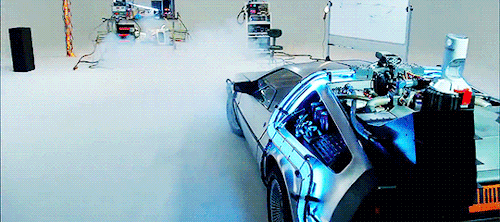
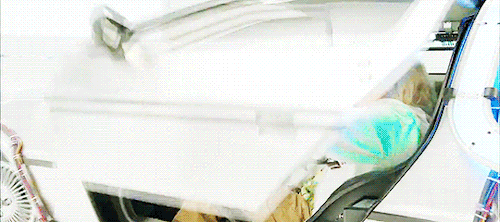
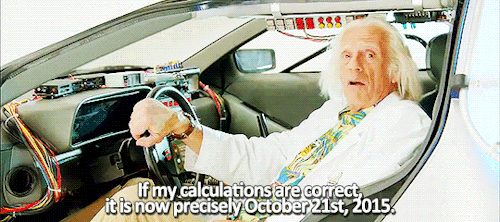
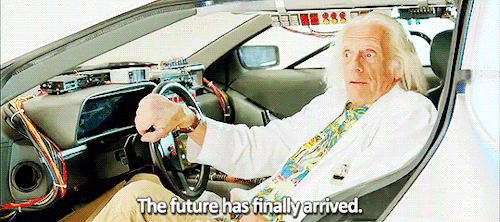
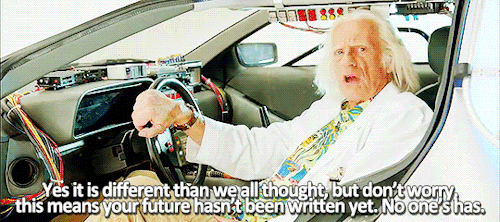
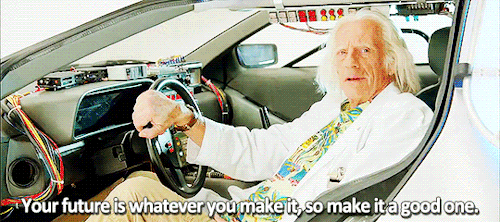
Thanks, Doc
Alpha Centauri bb, an Earth-like planet orbiting our closest star, has just vanished. In fact, a new study suggests it never actually existed outside of a blip in the data.
The planet was discovered in 2012, and it was a pretty big deal at the time. According to researchers’ best estimates, Alpha Centauri bb appeared to have a mass similar to Earth and was orbiting its star at a distance similar to Mercury.
Best of all, it was only 4.3 light-years away – a whole lot closer than most other Earth-like exoplanets – and existed in a star system that had housed the science-fiction characters of Avatar and Transformers.
But a year after its discovery, a separate group of researchers called the discovery into question, when they found only weak evidence that the planet existed. And now a new study suggests that Alpha Centauri bb was never more than a ‘ghost’ in the data.
The research serves as a cautionary tale to astrophysicists hunting for evidence of planets orbiting distant stars, and reminds us of how hard it is to work out what’s going on using sporadic data taken from distant star systems.
Continue Reading.
-
 thestonecuttersguild liked this · 6 years ago
thestonecuttersguild liked this · 6 years ago -
 1969aerospace reblogged this · 6 years ago
1969aerospace reblogged this · 6 years ago -
 b1zzle liked this · 9 years ago
b1zzle liked this · 9 years ago -
 dexterousfolder reblogged this · 9 years ago
dexterousfolder reblogged this · 9 years ago -
 ifearthemoon reblogged this · 9 years ago
ifearthemoon reblogged this · 9 years ago -
 mcdara liked this · 9 years ago
mcdara liked this · 9 years ago -
 quasarcount reblogged this · 9 years ago
quasarcount reblogged this · 9 years ago -
 pointofsolace liked this · 9 years ago
pointofsolace liked this · 9 years ago -
 kissmeimatrumpeteer reblogged this · 9 years ago
kissmeimatrumpeteer reblogged this · 9 years ago -
 inter-stellxr-blog reblogged this · 9 years ago
inter-stellxr-blog reblogged this · 9 years ago -
 aerospaceengineering reblogged this · 9 years ago
aerospaceengineering reblogged this · 9 years ago -
 lovesdaryl liked this · 9 years ago
lovesdaryl liked this · 9 years ago -
 lovesdaryl reblogged this · 9 years ago
lovesdaryl reblogged this · 9 years ago -
 vatnik-ivan liked this · 9 years ago
vatnik-ivan liked this · 9 years ago -
 whoiswillieanyway reblogged this · 9 years ago
whoiswillieanyway reblogged this · 9 years ago -
 whoiswillieanyway liked this · 9 years ago
whoiswillieanyway liked this · 9 years ago -
 the-scoutt liked this · 9 years ago
the-scoutt liked this · 9 years ago -
 stargazingblrpenguin liked this · 9 years ago
stargazingblrpenguin liked this · 9 years ago -
 deathbybisexuals liked this · 9 years ago
deathbybisexuals liked this · 9 years ago -
 hinkumphinneyduster liked this · 9 years ago
hinkumphinneyduster liked this · 9 years ago -
 starhasarrived reblogged this · 9 years ago
starhasarrived reblogged this · 9 years ago -
 starhasarrived liked this · 9 years ago
starhasarrived liked this · 9 years ago -
 apocalyptic-mailman liked this · 9 years ago
apocalyptic-mailman liked this · 9 years ago -
 inter-stellxr-blog reblogged this · 9 years ago
inter-stellxr-blog reblogged this · 9 years ago -
 blackcoffeehigh liked this · 9 years ago
blackcoffeehigh liked this · 9 years ago -
 quasarcount liked this · 9 years ago
quasarcount liked this · 9 years ago -
 aluminothermic liked this · 9 years ago
aluminothermic liked this · 9 years ago -
 aluminothermic reblogged this · 9 years ago
aluminothermic reblogged this · 9 years ago -
 aerospaceengineering reblogged this · 9 years ago
aerospaceengineering reblogged this · 9 years ago -
 justhavetofeelthewaves liked this · 9 years ago
justhavetofeelthewaves liked this · 9 years ago -
 guozp liked this · 9 years ago
guozp liked this · 9 years ago -
 kitchinting-blog liked this · 9 years ago
kitchinting-blog liked this · 9 years ago -
 thoths-foundry-blog reblogged this · 9 years ago
thoths-foundry-blog reblogged this · 9 years ago -
 good-and-colorful liked this · 9 years ago
good-and-colorful liked this · 9 years ago
"I don't know who will read this. I guess someone will find it eventually. Maybe in a hundred years or so." -Mark Watney
174 posts

